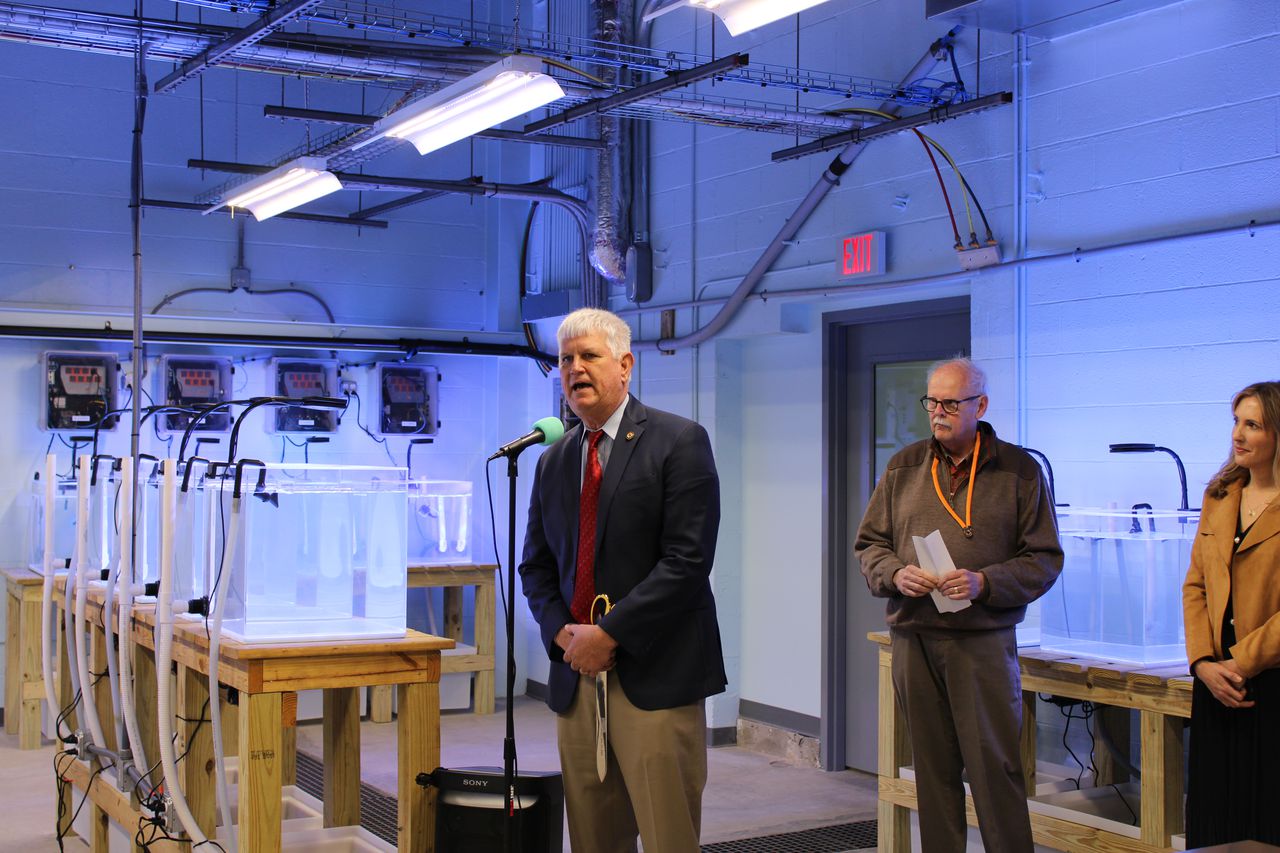New Dauphin Island lab provides ‘time machine’ to study Gulf conditions
A Dauphin Island bunker designed to house a generator for a military outpost has begun a new life as a source of cutting-edge science on the Gulf of Mexico.
Dauphin Island Sea Lab scientists and government officials gathered Monday to celebrate the opening of the Sea Lab’s newest asset, a multi-stressor wet lab. Its benches were lined with water tanks hooked up to aerators and other equipment.
According to information provided by the Sea Lab, the new lab will allow researchers to see how marine organisms respond to multiple changes in environmental conditions at the same time. “This could be called a time machine, because we will be able to expose marine organisms to future conditions of varying levels,” Senior Marine Scientist Dr. John Lehrter said in a statement released by the Sea Lab. “When you start to expose animals to multiple stresses, the threshold identified for one stress may change based on the combination of stresses exposed at one time.”
Conditions that can be changed and monitored in the lab’s tanks include oxygen level, acidity, salinity and temperature.
“This facility was funded out of a supplement that the state of Alabama gave us a few years back and if you know anything about our facility, we’re a 1950s, 1960s-constructed Cold War Air Force Base,” Sea Lab Executive Director John Valentine said on Monday. “We can’t tear these buildings down with TNT. So we repurposed what was the Air Force generator building here into this modern state-of -the-art facility. We have contributions again from the state budget, and also the U.S. Department of Treasury contributed to this facility as well.”
Valentine said work done at the lab could have global significance, because it’ll provide fresh data direct from the Gulf of Mexico. Scientists will be able to measure trends in what’s happening with Gulf waters, then run tests in the lab to understand how those trends may affect sea life.
“What we do with our resources really matters. We’re always forced to rely on data that’s coming either from the East Coast or the West Coast, and we seldom have data that comes from the Gulf Coast, and our ocean is much different than those two oceans and so this is totally relevant to us,” said Valentine. “And this is important for the state beyond just economic contribution, because we’ll be able to advise the state on policy, we’ll be able to help the state prioritize what’s important and what’s not important. As you know, we’re not advocates, we’re scientists. We’re talking from the data that we collect. We’re not talking from positions that were published elsewhere around the country.”
“I will say that this is vital to the Gulf Coast region, like Dr. Valentine said, we need to know what’s happening in the Gulf of Mexico,” said Ala. Sen. David Sessions, R-Grand Bay, who took part in Monday’s ribbon-cutting. “We don’t need to know what’s happening in the Atlantic on the East Coast or the Pacific on the West Coast. And this is just one way that Dauphin Island Sea lab and consortium can do vital research of the health of the Gulf Coast and Gulf of Mexico and the entire coastal area. So it’s a pleasure to be here and be a part of this.”
Additional funding came from the U.S. Department of Treasury via the Alabama Department of Conservation and Natural Resources Centers of Excellence Program under the RESTORE Act. According to the Sea Lab, the new wet lab will be used first for research projects funded through the Alabama Center of Excellence but will be available in the near future to researchers throughout the 22 Colleges and Universities that comprise the Marine Environmental Sciences Consortium.
Amy Hunter, representing the Alabama Department of Conservation and Natural Resources, said that as a former Sea Lab student herself, she was thrilled to see the transformation of a building that had been used for storage. “This is a happy day, an exciting day,” she said.
